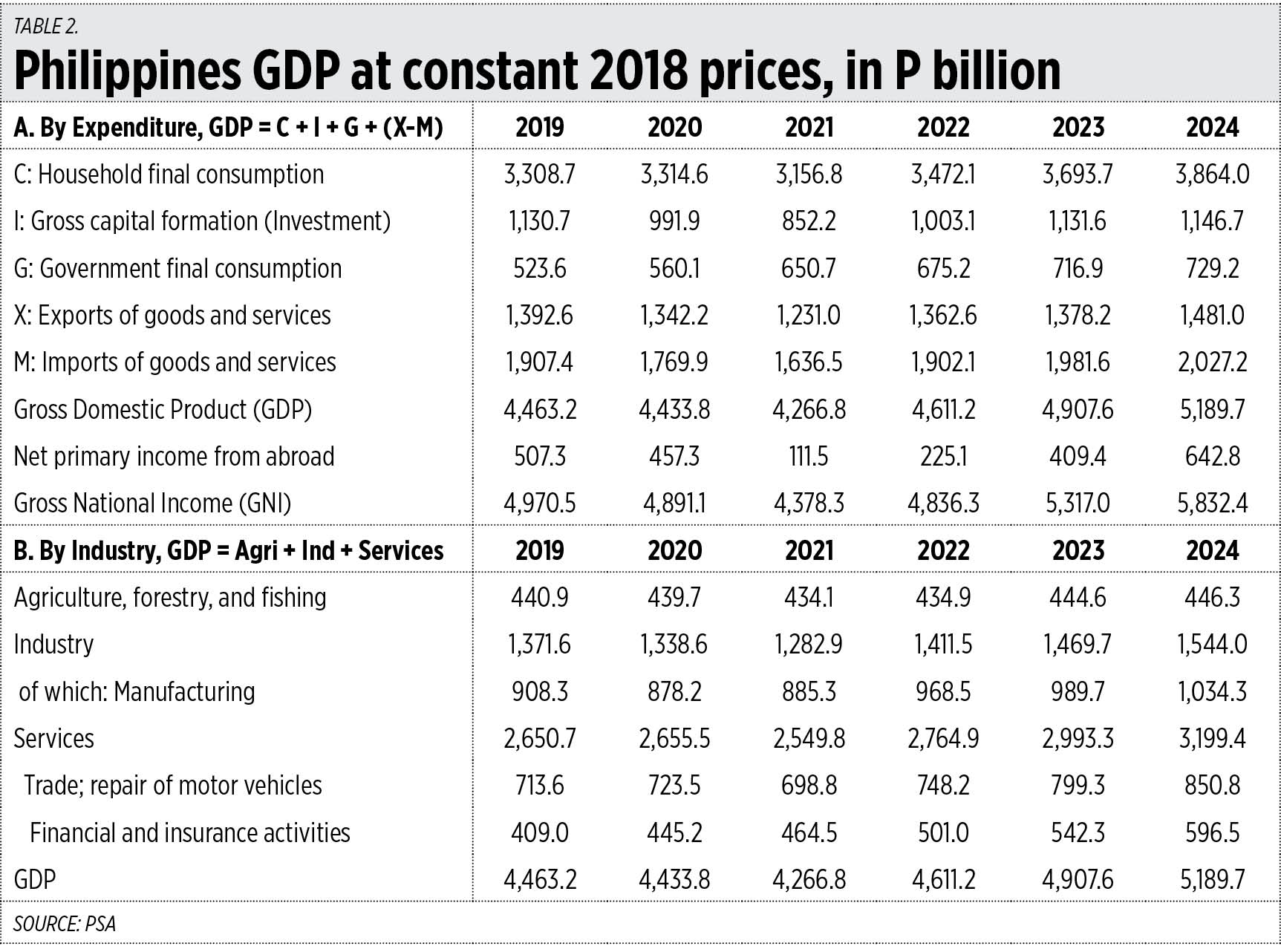PHL growth resilience amid a deteriorating global economy
Last week, the Philippine Statistics Authority (PSA) released the growth data of the first quarter (Q1) of 2024. It was 5.7%, lower than the projected 6% or higher. Economic pessimists jumped on the discrepancy to say that they were correct in their regular attacks against the policies of the current government economic team and the administration. Except that they forgot about or deliberately omitted showing the growth rate of our Asian neighbors and other countries in the world.
In Q1 2024, Taiwan had the fastest gross domestic product (GDP) growth at 6.5% — but it was more of a base effect as Taiwan’s economy contracted by -3.5% in Q1 2023. So, Vietnam and Philippines were the co-leaders when it came to fast growth in Q1 — but then again, Vietnam was also coming from a low base, low growth in Q1 2023, while the Philippines was coming from a high base, high growth in the same period. Thus, the Philippines is the best performing major economy in the world, except perhaps for India — but they have not released their Q1 2024 GDP data yet.
Another indicator of economic dynamism, or lack of it, is the Manufacturing Purchasing Manager’s Index (PMI). An index above 50 is good, meaning that purchasing managers are optimistic about the economy in the coming months and quarters. An index below 50 is bad, while one below 47 is horribly bad. For the accompanying table, I took the April 2024 PMI and that from six months before, October 2023. The Philippines had a high PMI of 52.
Many G7 countries and other European nations are already on the path of degrowth and deindustrialization. These include Germany, Italy, the UK, Austria, Sweden, Ireland, Finland, and so on. They are also the same countries with bad or horribly bad PMIs (see Table 1).
Budget Secretary Amenah F. Pangandaman noted the role of fiscal discipline in sustaining growth: “I am confident that growth will accelerate further in the coming quarters as we prioritize shovel-ready projects for a more efficient implementation of the Build-Better-More program… We also look forward to the passage of the new Government Procurement Reform Act, which will boost efficiency in procurement and exponentially improve budget utilization.”
Secretary Arsenio M. Balisacan of the National Economic and Development Authority (NEDA) reiterated the optimistic view that “with hard work and the right policies in place, we are confident that we will achieve our growth target of 6-7% this year.”
I support the optimism of the economic team. I laugh at the pessimism of the detractors who do not include the deteriorating global economic environment in their constant criticism and yet the Philippine economy is able to stand tall.
Looking now at the details of the sectoral performance of the Philippine economy, in GDP by expenditure or the demand side, the main driver of the 5.7% growth in Q1 were the Exports of Services (15.6% of GDP in Q1 2024) — BPO, the tourism sub-sectors, even POGOs — which grew at 8.9%. Household consumption (which makes up 75% of GDP) had modest growth of only 4.6%, while Investments and government consumption had low growth of only 1.7% and 1.3% respectively.
Looking at the GDP by industry origin or the supply side, the growth drivers were the services sector (which comprised 62% of GDP) with 6.9% growth led by Accommodation and food services with growth of 14%, and financial and insurance activities with 10% growth. Industry makes up 30% of GDP and had 5.1% growth.
The Manufacturing sub-sector (20% of GDP) grew by 4.5%. Low growth in agriculture, forestry, and fishery is shown by their low output — only P446 billion — in Q1 this year, with little expansion from their P441 billion output in Q1 2019 (see Table 2).
Mining is really an under-rated and unrecognized growth driver. In Q1 2024, mining and quarrying output was P43.3 billion (constant prices), even lower than its Q1 2019 output of P45.6 billion. This was among the topics discussed in the Stratbase ADR Institute’s mining conference last Friday, May 10, at the Makati Diamond Residences. Environment Secretary Ma. Antonia Yulo-Loyzaga and NEDA Secretary Balisacan were the keynote speakers. The ambassadors of Australia, Canada, Japan, and the European Union were also among the speakers.
Meanwhile, here are two conferences that I will be attending.
Lunas Pilipinas and the Concerned Doctors and Citizens of the Philippines (CDC PH) will be holding a conference on May 18 at the University of Asia and the Pacific (UA&P) with the theme, “Healing from COVID Lockdown and Mandatory Vaccination: From trauma and tragedy to resilience and victory.” Among the speakers will be BusinessWorld columnist Jemy Gatdula, who is the Dean of UA&P College of Law; Dr. Romy Quijano, a retired professor of Pharmacology and Toxicology at the UP College of Medicine; and Dr. Marivic Villa, a pulmonologist, internist, and practitioner of critical care, and anti-aging medicine based in Florida, USA, who is also President of CDC PH.
I will also be attending the BusinessWorld Economic Forum on May 22 at the Grand Hyatt Manila in BGC, Taguig, with the theme “PH Next: Growth Drivers.” The keynote speakers will be NEDA’s Mr. Balisacan, and JG Summit President and CEO Lance Y. Gokongwei. Other speakers will be the corporate leaders of Angkas, Aboitiz InfraCapital, Converge, Globe, Grab, EastWest Bank, Lazada, Maya, GCash, CICC, PEZA, Destileria Limtuaco, ACEN, FirstGen, Meralco, and IEMOP.
See also:
BWorld 702, Privatize assets to cut debt
BWorld 703, Six myths about thin power reserves
BWorld 704, On declining inflation and unemployment, and trade with China



No comments:
Post a Comment